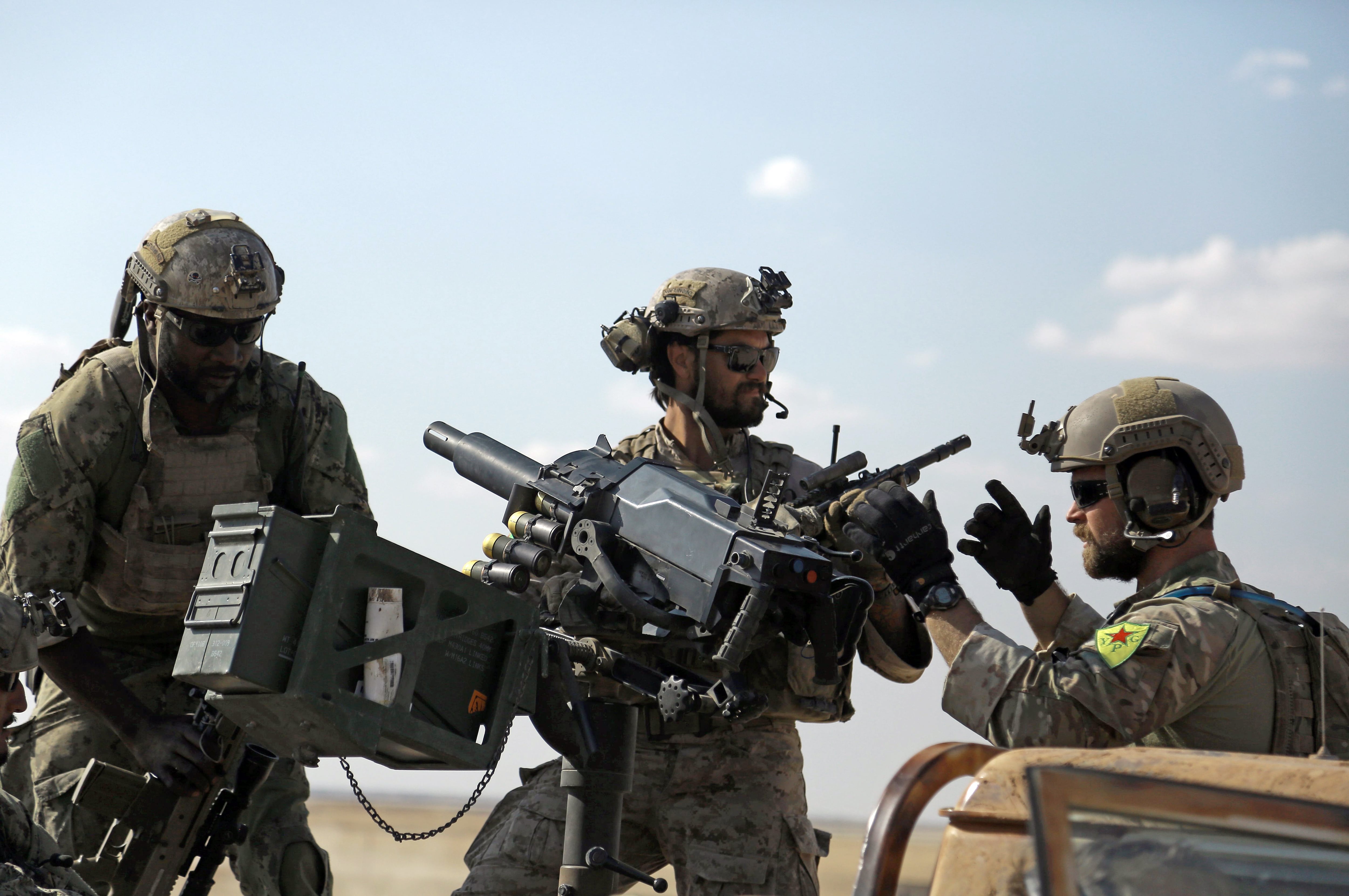The Pentagon is sending another 200 troops to northern Syria as operations intensify around the Islamic State's self-proclaimed capital of Raqqa, Defense Secretary Ash Carter announced Saturday.
With this deployment, the American military presence on the ground in Syria will grow to 500.
Speaking in Bahrain, Carter said that, like the 300 U.S. troops already in Syria, these additional personnel will be focused on training and advising what officials say is a growing number of local forces focused on retaking the ISIS stronghold. They will include elite special operations troops, military advisers and explosive ordnance disposal specialists.
"These uniquely skilled operators will ... continue organizing, training, equipping, and otherwise enabling capable, motivated, local forces to take the fight to ISIL," Carter said, using an alternative name for the Islamic State, "and also bringing down to bear the full weight of U.S. forces around the theater of operations like the funnel of a giant tornado."
Coinciding with Carter's announcement, U.S. allies in Syria said Saturday that they are beginning the second phase of their operation to retake Raqqa.
The U.S. is supporting a patchwork of Kurdish and Arab militia groups, collectively known as the Syrian Defense Forces, who've teamed to battle the Islamic State. Aided by American airpower and small teams of combat advisers, "tens of thousands" of local fighters are amassed about 15 miles outside of Raqqa, Carter said.
A U.S. military spokesman said this week that the Syrian Defense Forces now number around 45,000 in all.
"As the SDF isolates Raqqa, the number of SDF fighters continues to grow," said Air Force Col. John Dorrian, who is based in Baghdad. He noted that the newest Arab brigade includes more than 1,000 men and women who've joined the fight "to reclaim and protect their homes." Another 1,500 prospective SDF fighters in training are expected to be a part of the Raqqa offensive, he said.
U.S. officials say there is renewed urgency to target the city because intelligence assessments indicate militants there are plotting terror attacks on the U.S. and its allies.
The U.S. strategy against ISIS has been to deny freedom of movement, knocking out key transit routes, choking off the group's ability to resupply its fighters and isolating its principal strongholds, Raqqa in Syria and Mosul in Iraq, where Iraqi and Kurdish Peshmerga forces have been concentrated for the last several weeks. The campaign also has focused on the group's finances.
Carter said the effort is producing tangible results, touting a massive grouping of airstrikes on Thursday that destroyed nearly 170 truckscarrying around $2 million worth of oil used to fund the Islamic State's operations. The attack near Palmyra, about 150 miles south of Raqqa, was the largest since U.S. warplanes began targeting ISIS in Syria about two years ago, he said.
It was one of seven attacks carried out the same day by coalition aircraft in Syria. Three of those strikes targeted militants and weapons inside Raqqa. Another two hit supply routes in Ayn Isa, a village just north of the city where late last month a U.S. service member, Senior Chief Petty Officer Scott Dayton, was killed by an improvised explosive. Dayton is the first known American combat fatality in Syria.
In Iraq, U.S. airstrikes have continued to target ISIS fighters, weapons and equipment in and around Mosul.
"We’ve deliberately focused on severing the territory ISIL controls in Syria from the territory it controls in Iraq," Carter said. "Leaders of the terrorist group can no longer travel between Raqqa and Mosul without the risk of being struck. ... Since we began accelerating our campaign last year, we’ve killed the majority of ISIL’s most senior leaders."
Throughout the past two years, an estimated 50,000 ISIS militants have been killed in Syria and Iraq, U.S. officials said this week.
Andrew deGrandpre is Military Times' chief editor. On Twitter: @adegrandpre. The Associated Press contributed to this report.





